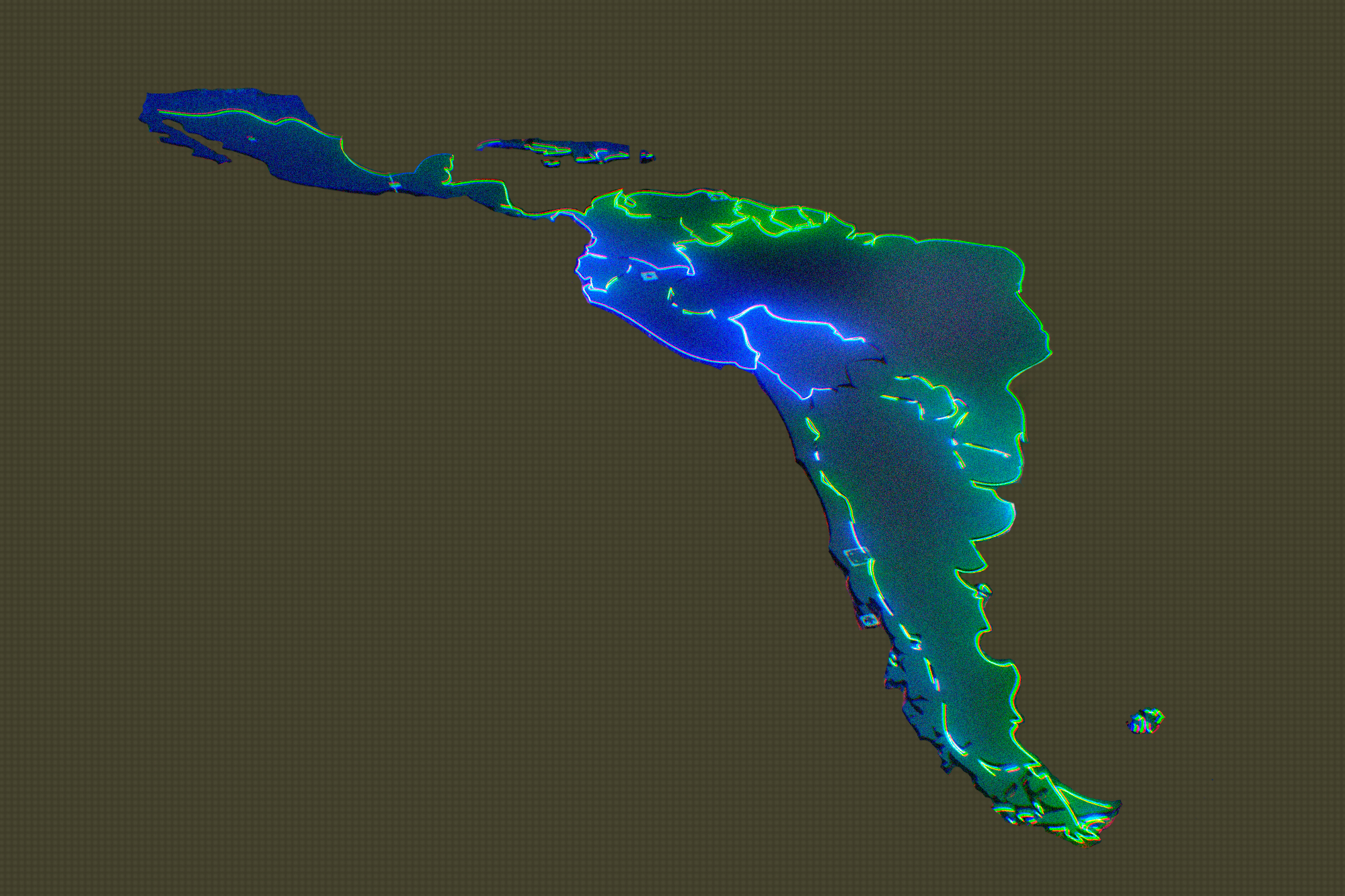US President Biden recently announced, at the Summit of the Americas, the Americas Partnership for Economic Prosperity, with the goal of driving “our hemisphere’s economic recovery and growth, and deliver for our working people.” Could such an idea work? It arrives on top of a myriad of prior regional attempts at political integration and economic partnerships that have been promoted since the late 1950s and promoted by a panoply of organizations from vastly different spheres.
These past attempts range from the ethereal Pacific Alliance, which has no organization or secretariat but claims to have removed tariffs on 90% of the products traded between its four member countries, to Mercosur, which despite its robust structure has yet to progress in the creation of a free trade zone and its customs union has been modest and with recurring conflicts. Other initiatives of economic integration in the region have included: the free trade zone initiated 50 years ago by CAN (Andean Community), the customs union created by the Central American SICA, a system to coordinate common strategies in Latin America and the Caribbean developed by SELA, and the progressive convergence of partial initiatives towards a Latin American common market proposed by ALADI.
That is hardly the half of it. We must also remember the FTAA project, devised at the first Summit of the Americas but never came to fruition, and its antagonist, the moribund ALBA, whose very limited activities are confined to political declarations of support for its autocratic member countries and their subsequent publication on the organization’s web site. The Summit of the Americas has a way of just falling short, as my colleague Ángel Alsono Arroba recently noted.
All this political and diplomatic activity by Latin American states, and by the organizations set up to promote regional economic integration, has not yet yielded results on a par with similar initiatives in Asia or Europe, with the exception of the free trade agreement between Canada, the United States, and Mexico (which only has one Latin American member.)
According to a report by the Development Bank of Latin America (CAF), intra-regional trade between Latin American countries stands at around 15% of exports. This is a far cry from the European Union, where the figure is 60%, and ASEAN, where it is 35%. In fact, exports to the rest of the world have grown faster than domestic trade in the last two decades in the region.
Multilatinas and tecnolatinas are driving regional economic integration.
This is not to say that trade and regional integration have not progressed in recent decades. The economic reforms of the 1980s and 1990s that opened up the region, the worldwide trend towards globalization until the onset of the COVID pandemic, and the region’s new physical and digital infrastructures have each led to greater trade flows at various levels.
These factors were joined by bilateral free trade and investment agreements, on top of the initiatives designed by the regional organizations mentioned above, and have thus paved the way for the creation of the first “multilatinas”, those large companies operating in two or more Latin American countries. According to reports by the Boston Consulting Group and from América Economía, some of the major multilatinas are cement companies, banks, department stores, energy companies, and construction firms.
Since then, the region’s large corporations have emerged as one of the most important players in regional economic integration, with capital, services, products, and also people moving between the subcontinent’s countries.
In the last five years, the tecnolatinas have boldly and swiftly jumped on board. Pioneers such as Globant, Softtek, Mercadolibre, Totvs, and Stefanini have been joined in the last decade by many startups, some of which are now unicorns valued at more than $1 billion, approaching Latin America as a common digital market.
In 2021, Ignacio Peña’s Tecnolatinas report published by the IDB LAB identified 1,005 Latin American startups that raised over $1 million in capital, of which 340 (34%) had a regional or global market strategy. One in three of these startups is focused on the regional market, not just on their local footprint. According to the same report, this common digital market approach is welcomed by investors because these technology companies have a supranational value proposition that attracts 56% of venture capital, which is nearly twice as much as those focused solely on their home market.
A look at the regional unicorns reveals similarities. Practically all of them have operations in two or more countries in the region, with Brazil, Mexico, Colombia, and Argentina being the main unicorn markets, generating de facto a common Latin American digital market.
There are many examples: Habi, the Colombian proptech, also operates in Mexico; Mexico’s Nowports has offices in Chile, Colombia, Brazil, Peru, Uruguay, and Panama; the payment platform Kushki operates in five countries; and Rappy has become a regional leader. It’s worth considering whether Latin American tecnolatinas, startups, and scale-ups are achieving market integration in the region faster than multilateral organizations, and why that is the case.
Latin American Digital Economy Community
The European Union is recognized as the most successful, comprehensive process of peaceful, economic, and political integration in recent history, as historian Susana Torres puts it, “one of the most miraculous endeavors of human determination in history.” It has become an example to follow for other initiatives that tend to see it as a blueprint to be emulated. However, it should be remembered that the current EU originated in the very specific and simple European Coal and Steel Community in 1951. This was a common market of six countries limited to two strategic products, with the main objective of avoiding war and facilitating reconstruction.
Many Latin American integration initiatives have copied the EU model. For example, Mercosur which, like the EU, has a parliament and even structural convergence funds to facilitate regional integration from the “top down”, i.e., by governments and states. Like Mercosur, other regional initiatives have attempted to fast track the creation of comprehensive, highly complex, economic, and political unions.
Would a regional integration initiative that began with specific, simpler, industry-specific integration among the countries of the region, as Europe did in 1951 with coal and steel, have a better chance of success, and would it help to lay the foundations for a broader community in the future?
It is extremely difficult to answer this question, although it is perhaps easier to identify the best sector to choose to roll out such an initiative. In all likelihood, it would be the digital economy.
There are several good reasons to give this idea some thought. Firstly, tecnolatinas are already a reality. Thousands of companies, from software developers to e-commerce, application firms and other types of technology-based ventures operate in several countries in the region simultaneously. In addition, and despite the differences between countries, both companies and end users of technologies share a common or similar language as well as needs that are comparable and quite different from those of other regions such as Europe and the United States.
From a political point of view, it is also important to mention that it is an emerging, fast-growing market, where much of the legislation, such as data protection laws and technology taxation, is still being rolled out.
This could make it easier for a hypothetical Latin American Digital Economy Community to create common laws, agreements, and standards on aspects such as data ownership, AI regulation, self-driving cars, IoT, and other aspects for the whole region from the outset, when they are still at an embryonic stage, rather than standardizing them afterwards based on an approach that has already been deployed in 27 different markets.
It should also be remembered that the creation of a (truly) common market with similar taxes, standards, and laws for 500 million digital consumers would give the region an opportunity to deal with the big-tech companies on a more balanced footing, as well as the chance to foster the development of a greater number of Latin American unicorns and digital champions to compete in a global economy that will be digital, or not.
Regional integration experiences have not yet shown that such a project can materialize, although there are some green shoots. On January 1, 2022, the Andean Community countries eliminated roaming charges for their 111 million inhabitants. For the time being, entrepreneurs and technology professionals in the Andean Community will no longer be charged more when moving within this economic bloc.
© IE Insights.











